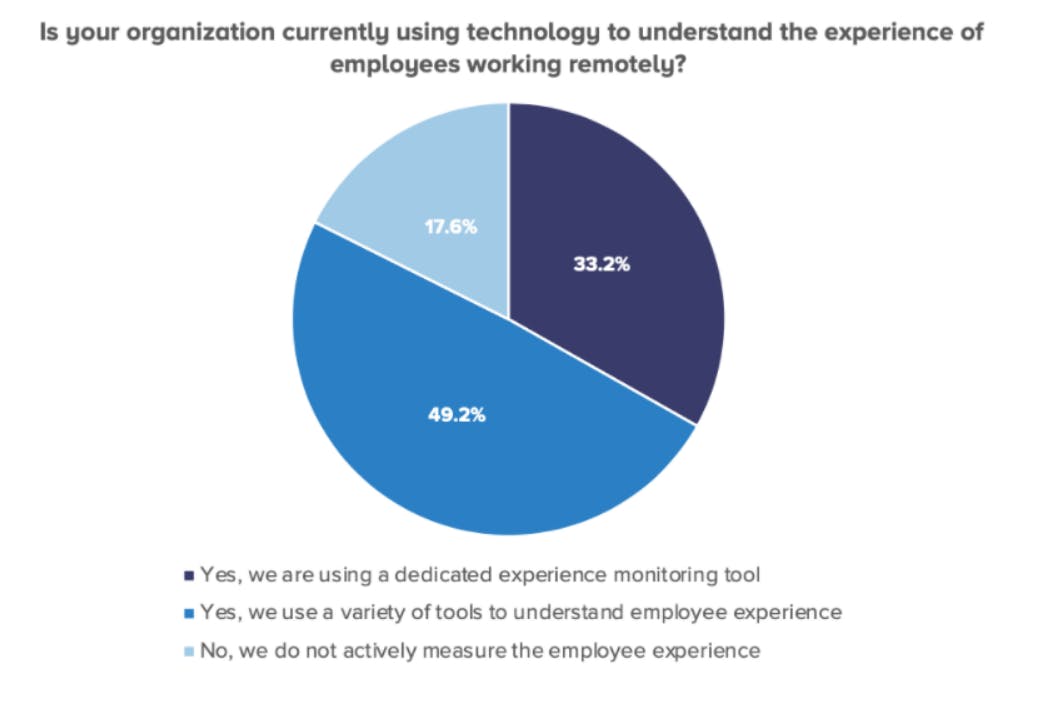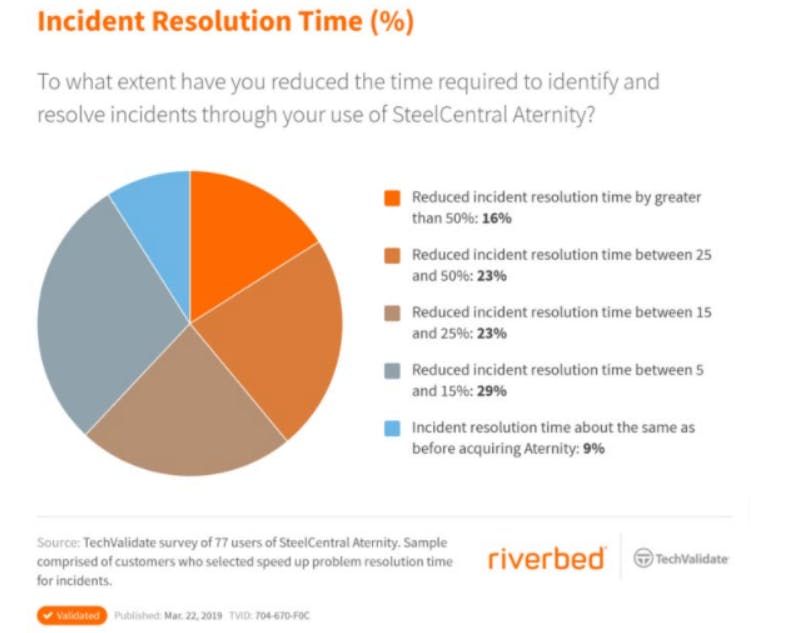Digital experience monitoring solutions (DEM) help optimize the content that organizations have on their platforms. With a proper DEM strategy, communication with employees and the end audience becomes smooth, direct, and trouble-free. The overall performance can see a drastic improvement when they tap into the many benefits which DEM offers.
Digital Experience Monitoring: a basic understanding
Digital experience monitoring leverages technological advancement to push beyond performance monitoring strategies. Here the focus is on the end-user interactions with the applications. It enables leaders and employers to observe and then analyze the interactions between digital agents, as either individual, businesses, or communities. In today's digital ecosystem, it is of utmost importance to keep DEM in mind to guarantee a satisfactory end-user experience for your applications.

Studies show that companies have become necessary to monitor stakeholders' experiences.
Why is it necessary to have a Digital Experience Monitoring strategy?
To answer the question, in short, four things can be mentioned to get the discussion started:
It provides analytics, is helpful for machine learning deep learning, and leverages the internet of things (IoT) which can definitively improve User Experience (UX).
Your digital platform needs to be updated regularly and optimized so that communication and transactions can be carried out smoothly, without roadblocks.
You can manage the quality of your performance by comparing it against your competitors. The results of this analysis can then be used as a guide on how to do better when employing digital performance best practices.
You can build stronger connections with your company's stakeholders, including clients, customers, and employees.
This article aims to dig deeper into six main reasons why today, it is essential for companies to invest in a proper DEM Strategy. We will try to look at each of these benefits in some detail.
The reasons why DEM strategies are beneficial
Useful data is generated
Firstly, using a DEM Strategy is analytics' dream. Observing the different interactions that customers and other end-users have with each application leads to the generation of valuable and helpful data. The extensive metrics which come out of this endeavor help leaders to calculate end-to-end network and device KPIs. Mainly defined user journey or user persona interactions are included here. Customized especially for your application, these insights are powerful. They are powered by AI and can undoubtedly lead to the success of an organization.
This generated data is also objective in nature. Not to downplay the role of subjective data in any way, but for determining customer demands and improving UI and UX, there is a great need for objective data, mainly so that user journeys and instances can be recorded and generalized in a considerable number – this makes making predictions easier. For details of data like:
trends of behavior
personalized demands and requirements
insights arrived at through neural network algorithms
content management control
omnichannel customer experience management
properly timed alerts
agreement compliance at the service level
monitoring of integrated technologies
monitoring of unified communications
control of and timely updates to social media channels
IT Visibility and machine interactions
Coming back to the data which was generated from the metrics arrived at through this process, it provides leaders and employers with enough information to understand the end-user experience in great detail. Your unique user personas become more and more visible to the IT teams, who then can strive to improve the experience of the customers/employees.
Further, DEM helps keep a record of how machine interactions unravel. The ultimate and primary customer indeed remains a human, but it is also a reality that many applications developed today face machines as their end-user. This development necessitates a look into machine-to-machine interactions to avoid any bad reviews or loss of clients. With more companies relying on machines to ensure the absence of human flaws, an effective DEM strategy that also takes machine interactions into cognizance becomes unavoidable.
Staying relevant
The demands of digital customers are ever-increasing, and it is not an option to be behind other organizations of your kind. Since the present economic scenario demands most end-customers to be digitally connected, gathering performance insights of UI is invaluable. If you do it better, which means with more data and research, you naturally gain a competitive advantage.

More than 33% of organizations admit to using a dedicated DEM strategy.
Opting to invest in any strategy assumes the one goal of productivity and positive transformation, and embracing such transformations as the trends of the time demand is the key to achieving success. Getting rid of glitches, lessening load time, and debugging applications for a better experience helps retain customers and prevent revenue loss. Marching towards technological advances is smart, and looking ahead and beyond the capacities of one's company is advantageous and good practice as well.
The perspective of the user
As a customer: As an end-user, there is no way for those who use your application to know what goes on at the backend, how issues develop and how they are solved. Therefore, they expect that only the best interface and experience will greet them when they interact with different elements across multiple locations. If there is constant monitoring of these interactions, and improved KPI will lead to a much better customer experience overall.
As an employee: User interaction is as helpful for employees as it is for an enterprise's customers. If the people working in your organizations are faced with fewer problems that can be troubleshot easily, they can perform their daily tasks easily and quickly. Their productivity generally increases. If potential issues are spotted earlier on or predicted, severe problems which affect the revenue situation can be avoided. When employees are satisfied, retention rates also increase along with productivity and recruitment rates. Minor improvements like VDI right-sizing, automated fixes, hardware refreshes, and software rationalization can go long.
Good returns of investments
A Digital Experience Monitoring strategy would entail asset optimization, service desk improvements, and license management as well. This saves much money- the count can go up to hundreds, thousands, and even millions. The deep, objective data gathered and analyzed and the expanded visibility have much value in terms of time and money.

Research shows that using DEM strategies can reduce incident resolution time drastically.
Saving time and going Agile
Choosing fewer protocols, but wisely, is the key. An application cannot use a single protocol, but it is also vital to ensure that all those in use are monitored. If you decide to opt for a solution that only monitors HTTP, gaps may be left in your monitoring strategy. Ensure that the tools you use to address all protocols (like FTP or WebSockets) are relevant. If smooth running is ensured, much time can also be saved, and thus, resources may be optimized. For this, consulting a seasoned digital experience software partner can be recommended.
Since updates and releases keep coming at higher rates, it is wise to have a DEM strategy in place to optimize Agile technology to its fullest. An Agile development environment requires that companies keep testing their applications, but with increased testing and coding changes, performance issues may arise, leading to degradation. If the coders and developers are informed about these problems sooner, faster solutions may be expected. Challenges occurring while testing, followed by the Real User Monitoring (RUM), can be dealt with through a sound DEM strategy solution.
Conclusion
Today, the performance of applications is much more than just page load time. What is most important now is how the end-users perceive the interface. The onus of measuring usability has shifted to the overall functionality and performance of the application. Customers care about interaction, and thus, things like the following becomes essential:
Speed index
Perceptual speed index
Critical resources index
This is where user experience monitoring strategies can help. The market for DEM has been rising exponentially, as the need for remote communications and transactions has increased. Getting user attention and retaining it enough so that all stakeholders remain loyal is the primary concern for businesses now. For this, delivering the best user experience is the only thing that can be trusted. Building long-lasting, meaningful communications with employees and customers are the only way to run a successful business, and in this day and age, that depends entirely upon how good your digital platforms are.
Visibility is king- users only consider what they can see, interact with, and get responses from. Using Digital Experience Monitoring tools to map user journeys and troubleshoot problems when they appear is honestly the only way to prevent loss of clients. The whole enterprise of ensuring a good consumer experience has been simplified through DEM strategies.
